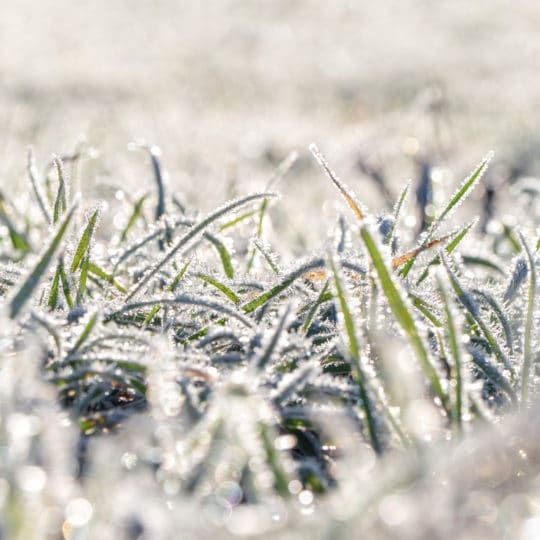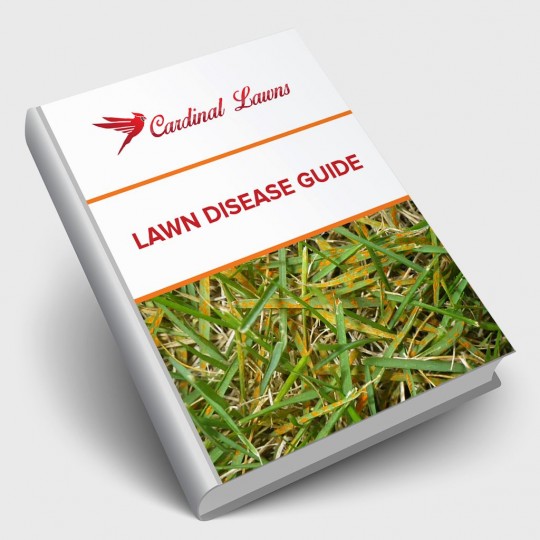8 Ways to Prevent Winter Lawn Disease
What to do & Not to do This Fall
Posted
November 7, 2024

You may not be thinking about the winter yet, but your lawn is. Grass growth starts to slow again this time of year as it prepares to go dormant during the colder months. However, even if the grass isn’t growing, disease could be. There are ways to help prevent winter lawn disease, and the key is to focus on fall maintenance.
Fall Lawn Maintenance: What to do and Not to do
A healthy lawn is best equipped to survive a harsh winter unscathed. Thick grass with a strong root system is more resistant to damage from pests and disease. So, how do you get your lawn in the best shape for winter? By following these fall tips. As long as you’re taking the time to maintain your lawn, it’s more effective if you know what to do and what not to do.
Mow the Lawn
- What to do: Gradually lower the mower blades to get the grass to about two inches before the first frost. This helps reduce matting and mold growth.
- What not to do: Cut it too short. This stresses the grass, making it weak and more susceptible to disease.
Clear Fall Debris
- What to do: Mow the leaves in your yard to create organic mulch. Either leave small clippings in your grass or bag it for your garden.
- What not to do: Leave large piles of leaves and other debris on your lawn. A thick layer of leaves traps moisture and blocks airflow to the grass, creating ideal conditions for fungal growth.
Aerate the Soil to Prevent Compaction
- What to do: Break up compacted soil to improve drainage, airflow, and nutrient absorption.
- What not to do: Leave the soil compacted. Poor drainage creates a buildup of moisture that leads to fungal issues.
Overseed to Fill Disease Hot Spots
- What to do: Fill thin and bare spots around your lawn with disease-resistant grass seed.
- What not to do: Ignore bare spots. These are the first places weeds and disease tend to grow.
Fertilize to Feed Throughout the Winter
- What to do: Apply a slow-release, balanced fertilizer to your lawn.
- What not to do: Choose a product high in nitrogen, as this encourages late-season growth instead of storing energy in the roots. Any new growth is more vulnerable to winter disease.
Water Your Lawn
- What to do: Ensure the ground around your trees and plants stay hydrated until the ground freezes.
- What not to do: Overwater. Too much moisture can freeze and damage grass blades as well as feed disease.
Apply a Fungicide to Prevent Disease
- What to do: If you’ve dealt with winter lawn disease before, you can apply a preventative treatment in the late fall.
- What not to do: Skip a consultation with a lawn care professional. If you choose the wrong product, not only will it be less effective, but you could end up damaging your lawn even more.
Reduce Lawn Traffic this Winter
- What to do: Stay off the lawn while it’s covered in frost or snow. Designate paths to keep off grassy areas.
- What not to do: Compact the snow on your lawn with foot traffic. Bent and broken blades are less likely to stand up to disease.
By following these lawn care tips, you can help prevent disease and damage while keeping your grass healthy through the winter so it can come back strong in the spring.
Let Cardinal Lawns Help Prevent Winter Lawn Disease
Fall is a crucial time in lawn care. It may seem like a lot of tasks to remember, but you only really need to know one number: 614-808-4446. This is who to call and find out about Cardinal Lawns expert lawn maintenance programs, including aerating, overseeding, and fertilizing. We provide residential and commercial services across Ohio to prepare green spaces to thrive throughout each season.

Download Your FREE Lawn Disease Guide
Even the most manicured landscapes are susceptible to lawn disease. Take some time to learn about identification and removal before one takes over your lawn. This handy guide teaches you how to spot common lawn diseases as well as how to properly treat them.